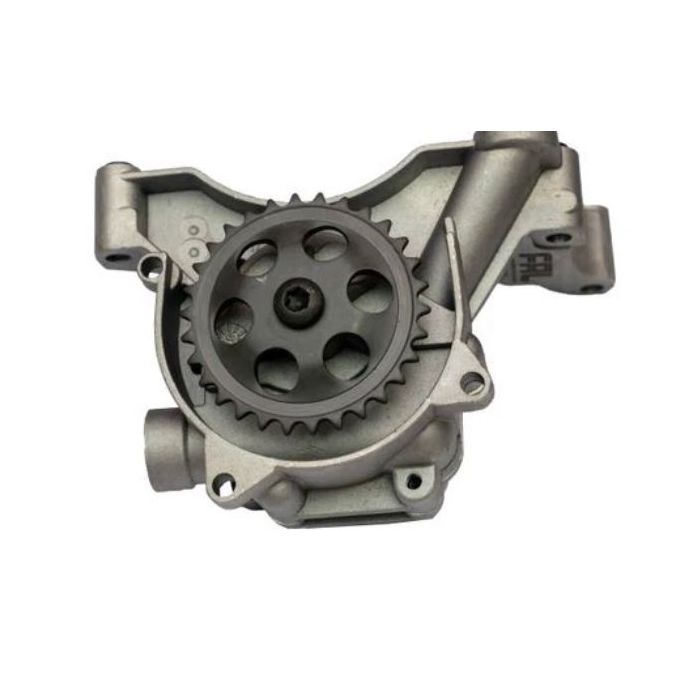Optimize fuel efficiency with a top-tier clp engine.
Optimize fuel efficiency with a top-tier clp engine.
Blog Article
Just How a Clp Engine Can Boost Performance in Different Industries
The advent of CLP engines marks a considerable shift in functional performance across numerous sectors, driven by their capability to maximize fuel intake and lessen downtime. Industries such as manufacturing and logistics stand to gain substantially from their durable style and consistent power output, which assure to streamline operations and improve efficiency. As companies significantly focus on sustainability together with efficiency, the function of CLP engines comes to be even more critical. What stays to be seen is how these innovations will certainly form the future landscape of industrial procedures and their effect on broader economic patterns (clp engine).
Review of CLP Engines
CLP engines, or Continual Fluid Propellant engines, represent a considerable development in propulsion modern technology, specifically for area applications. These engines use a continuous feed system that permits the continual expulsion of propellant, resulting in improved effectiveness and efficiency contrasted to standard solid or hybrid propulsion systems. By preserving a continuous flow of liquid propellant, CLP engines can attain more accurate drive control, which is vital for maneuvering spacecraft in different mission circumstances.
The style of CLP engines integrates innovative products and cutting-edge gas administration systems. clp engine. This causes decreased weight and enhanced dependability, necessary factors for long-duration room goals. Moreover, the constant operation lessens the risk of burning instability, an usual challenge in conventional rocket engines.

Advantages in Manufacturing
The manufacturing of Constant Liquid Propellant (CLP) engines presents several remarkable advantages that enhance both performance and cost-effectiveness. Among the main benefits is the streamlined production process, which lowers the complexity related to conventional propulsion systems. By making use of fluid propellant, suppliers can achieve greater accuracy in engine efficiency, bring about optimized power output and reduced waste.
Furthermore, CLP engines promote a higher level of modularity, permitting less complicated assimilation into different manufacturing lines. This flexibility can substantially reduce lead times and improve total operational versatility. Using CLP innovation likewise has a tendency to decrease the demand for substantial upkeep due to less moving parts, which equates right into minimized downtime and operational costs.

Applications in Logistics
Leveraging Constant Liquid Propellant (CLP) engines in logistics offers significant benefits in operational performance and reliability. These engines provide a robust service for various transport needs, making it possible for the smooth movement of products across large distances. The integral layout of CLP engines permits regular power output, which converts right into smoother and much more foreseeable transportation routines.
One of the key applications of CLP engines in logistics remains in heavy-duty products transportation, where they can drive both ground and aerial cars. Their capacity to preserve high performance under varying lots conditions makes certain that distribution timelines are met, thereby boosting customer contentment. Furthermore, CLP engines can be integrated into automated logistics systems, assisting in real-time tracking and enhancing route planning.
Moreover, the longevity of her response CLP engines minimizes maintenance downtime, allowing logistics firms to optimize their functional capacities. This is particularly useful in warehousing operations, where effectiveness in handling and carrying goods is crucial. As logistics remains to best site evolve, the integration of CLP engines stands for a forward-thinking approach that not only improves performance but likewise supports the market's growing needs for integrity and rate.
Impact on Energy Efficiency
Exactly How do Continual Liquid Propellant (CLP) engines enhance power effectiveness in transportation? CLP engines use a regular circulation of liquid fuel, maximizing combustion processes and keeping a secure drive outcome. This design lessens power losses related to standard combustion engines, where fuel distribution can differ and lead to inadequacies.
The continual procedure of CLP engines permits a more effective thermal cycle, causing greater details impulse contrasted to traditional engines. clp engine. This converts to reduced fuel consumption for the same amount of work done, dramatically reducing functional expenses across various transport fields, including air travel and maritime sectors
Moreover, the capacity of CLP engines to keep ideal efficiency under varying tons problems decreases the need for constant acceleration and slowdown, additionally improving fuel performance. Enhanced power performance not just contributes to set you back financial savings however also results in reduce greenhouse gas emissions, lining up with global sustainability goals.
Future Trends and Innovations
Arising developments in Constant Liquid Propellant (CLP) engine technology guarantee to transform the landscape of transport efficiency and sustainability. As sectors pivot toward greener options, CLP engines stand at the center, integrating cutting-edge materials and design approaches that enhance efficiency while decreasing ecological influence.
One of the most promising fads is the adoption of hybrid systems that incorporate CLP engines with renewable power resources. This synergy can enhance fuel usage and lower emissions, straightening with worldwide sustainability goals. Additionally, developments in computational liquid dynamics (CFD) are helping with the design of even more aerodynamically effective engines, causing decreased drag and enhanced fuel effectiveness.
Furthermore, the development of clever tracking systems is set to improve functional effectiveness. These systems take advantage of information analytics and IoT innovation to optimize engine performance in real-time, making sure that the engines operate within their most efficient criteria.
As study remains to explore different propellant formulas-- such as biofuels useful content and synthetic fuels-- the future of CLP engines looks appealing. By utilizing these technologies, industries can not only boost their performance however additionally contribute dramatically to a cleaner, much more lasting future in transport.
Conclusion
In conclusion, CLP engines represent a significant improvement in effectiveness throughout several sectors. The assimilation of innovative products and less relocating components reduces upkeep needs, while positioning with sustainability goals positions CLP engines as a pivotal modern technology for the future.
Report this page